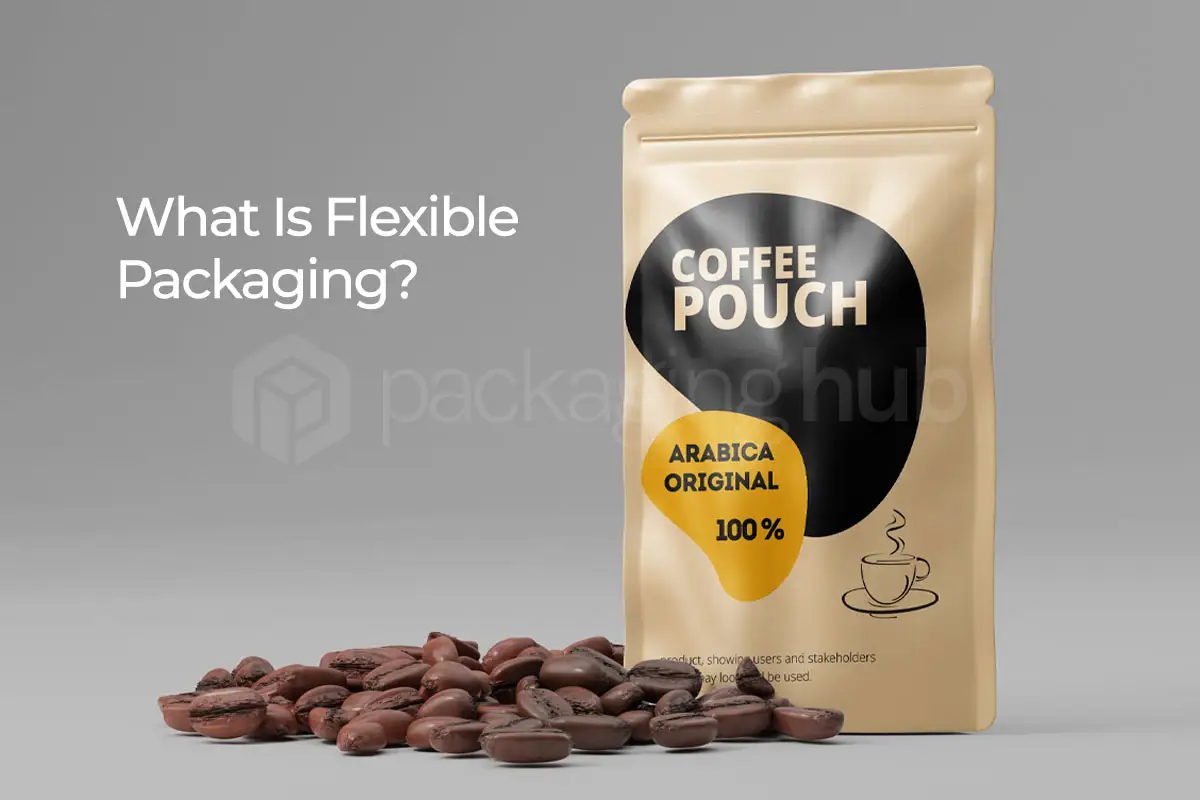Home » Blog » What Is Flexible Packaging – All You Need to Know
What Is Flexible Packaging – All You Need to Know
Posted March 3, 2023

Last Updated on February 25, 2025 by
Are you in the packaging industry and looking to make your mark using new technologies? The thing is, your packaging solutions can protect your brand from losing customers. At the same time, you can gain new ones, making your work more lucrative. So, this article will be about what flexible packaging is and how it makes a difference in the packaging industry.
Also, you can read about the types and pros, and cons of the flexible packaging industry.
What is Flexible Packaging?
The definition of flexible packaging is simple when looking for this type. So, any kind of packaging product that changes its shape when you fill it is flexible packaging.
Types of Flexible Packaging
When it comes to flexible packaging, there are some common types you can find, like:
- Pouches are among the common types of this packaging in the industry.
- Also, you can consider foil packaging as a flexible material for packaging purposes.
- There is a wide range of films you can find on it.
- Using this kind of packaging also works in the food industry.
- Tubes are another product type that falls under it.
- Anti-fog material in packaging is used for vegetables and meat.
- Linear Low-density Polyethylene is used for toys, bags, covers, pouches, and many others.
These common packaging types you can find will help you with the results you get with these materials. So, the better you use flexible materials, the more impressive and quality flexible box packaging you can get.
Some Popular Flexible Packaging Materials
When it comes to creating flexible packaging, you can find some common materials. So, here are some materials you can find:
- Linear Low-density Polyethylene is a common type of material you can find for flexible packaging.
- Biaxially-oriented: Polyamide is another material that offers a barrier to smells and carries durability and strength.
- Anti-fog material is a common type you can use for your products. It is a helpful material as you can see the products when packed inside it.
- Low-density: Polythene is another material that offers flexibility alongside being lightweight.
- Specialty films are another type you can find.
- Bi-axially oriented: Polyethylene products are also amazing regarding great materials. It offers stiffness and helps reduce the chance of a product’s puncture.
These are some common popular materials in the flexible packaging solutions department.
Pros Of Flexible Packaging
There are several benefits you can have, like:
- Regarding convenience, It is a great way to get that, which is why companies use it.
- At the same time, it takes less energy during production, making it a great product.
- It is also easy to carry and open.
- Experts know it as a sustainable type of packaging.
- You can do a huge amount of customization to this packaging type.
- It allows you to reduce the amount of material you use.
- Shipping flexible packaging is also easier.
- You can recycle this packaging, so you do not have to spend much on new production.
- Using this type of packaging also improves your product’s shelf life.
- At the same time, your overall cost reduces when you use this material, owing to less energy spending.
- Moreover, you can easily store and reseal it.
Now that we know what pros we have when we use flexible packaging. Next, we will talk about the most cons.
Cons of Flexible Packaging
- When it comes to flexible packaging, it can be an issue to keep food products odorless with it.
- It may be a difficult type of material to recycle because plants cannot work for it.
- Using this packaging, you should avoid packaging products in gaseous states.
- At the same time, there are some products for which rigid packaging would work.
- The materials would take hundreds of years to degrade in a landfill condition.
- This material can not help you against hits and bumps.
- At the same time, it may not offer great resistance to very high temperatures.
- You can use this packaging for pressurized products is not a possibility. So, your product packaging may get punctures and other issues in such conditions.
You can use this packaging manufacturing to ensure perfect results for your business.
History and Evolution:
- Origins and Development: Flexible packaging began in the early 20th century with simple paper and foil wraps. Over time, advancements in polymer science led to the creation of plastic films and laminates.
- Milestones and Innovations Over Time: Key milestones include the development of polyethylene films in the 1950s and the introduction of multi-layer films in the 1980s, which enhanced barrier properties and durability.
Comparing Flexible Packaging with Rigid Packaging
- Key Differences: Flexible packaging is lightweight and adaptable, while rigid packaging is sturdier and provides better protection. Flexible packaging often offers space efficiency, while rigid packaging typically offers durability.
- Advantages and Disadvantages: Flexible packaging is often more cost-effective and customizable, but may offer less protection than rigid packaging. Rigid packaging provides superior protection but can be heavier and more expensive.
Consumer Perspectives:
- Preferences and Trends: Consumers increasingly prefer flexible packaging for its convenience, resealability, and reduced waste. Trends include eco-friendly materials and innovative designs.
- Feedback and User Experiences: Positive feedback highlights ease of use and storage efficiency, while concerns include issues with recyclability and product freshness.
Impact on Supply Chain and Distribution
- Efficiency and Cost Savings: Flexible packaging reduces transportation costs due to its lightweight nature and compact size, leading to more efficient supply chains.
- Handling and Storage Benefits: Its flexibility allows for easier handling and storage, reducing the risk of damage during transit.
Innovations in Flexible Packaging Design
- Smart Packaging and Technology Integration: Innovations include smart labels with QR codes and NFC technology that provide interactive features and enhance user engagement.
- Creative and Functional Design Features: Advances in design include easy-open features, resealable closures, and stand-up pouches that offer both convenience and functionality.
Challenges in Flexible Packaging
- Common Issues and Solutions: Challenges include difficulties in recycling and maintaining product freshness. Solutions involve developing recyclable materials and improving sealing technologies.
- Technical and Logistical Challenges: Technical issues include ensuring material compatibility and barrier properties, while logistical challenges involve managing inventory and distribution efficiency.
Flexible Packaging in Different Industries
- Comparison Across Sectors (Food, Pharma, etc.): In the food industry, flexible packaging is used for convenience and shelf life. In pharmaceuticals, it provides tamper-evidence and moisture protection.
- Industry-Specific Trends and Needs: Each industry has specific requirements, such as child-resistant packaging for pharmaceuticals and easy-tear features for food products.
Global Trends and Market Insights
- Regional Differences and Preferences: Preferences vary by region, with North America focusing on convenience and Europe emphasizing sustainability.
- Growth Areas and Emerging Markets: Emerging markets in Asia and Latin America show increased adoption due to growing consumer demand and economic development.
DIY and Home Uses:
- Creative Uses and Upcycling Ideas: It can be repurposed for organizing household items, creating craft projects, or as plant protectors in gardening.
- Practical Tips for Everyday Use: Use flexible pouches for storing snacks, keep bags for organizing small items, and utilize resealable packaging for maintaining food freshness.
Case Studies and Success Stories
- Examples of Successful Flexible Packaging Implementations: Brands like Lay’s and Procter & Gamble have successfully used this packaging to enhance product appeal and functionality.
- Lessons Learned from Industry Leaders: Key lessons include investing in innovation, focusing on sustainability, and understanding consumer needs to drive success in flexible packaging.
Packaging Hub Takes Care of Your Needs
Packaging Hub helps improve companies, individuals, and small businesses get better sales for their products with impeccable packaging. So, we take care of every type of packaging to ensure we can add to your business. This is how we can help you get more sales and improve your results with flexible packaging solutions.

